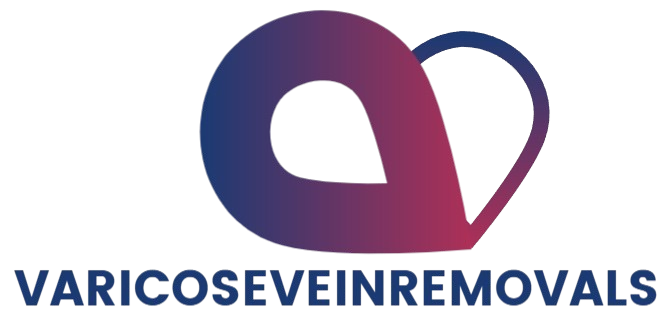In an era where virtual communication shapes how we work, learn, and connect, webinars have emerged as powerful tools in the healthcare industry. They’ve evolved from optional add-ons to vital communication assets—bridging gaps in education, patient engagement, professional development, and industry leadership. As the digital age reshapes the healthcare landscape, hosting innovative and well-executed webinars can make all the difference in reaching and resonating with your audience.
Why Webinars Are Reshaping Healthcare Engagement
Webinars have taken center stage in healthcare for several compelling reasons. Not only do they break down geographical barriers, making knowledge more accessible, but they also create a scalable platform for education and dialogue. Here’s why they’re indispensable:
- Broad Accessibility: Whether you’re reaching rural clinics or urban hospitals, webinars allow global attendance without the logistics of travel.
- Cost-Effective Training: Ongoing education becomes less expensive and more flexible, allowing professionals to learn without leaving their posts.
- Patient Connection: Virtual events open new channels for patient education, fostering trust and ongoing engagement beyond office visits.
- Establishing Thought Leadership: Webinars provide the perfect platform for showcasing expertise, featuring cutting-edge insights, and positioning your organization as a leader.
- Crisis Response: During emergencies like pandemics, webinars offer a rapid, wide-reaching way to disseminate vital updates and information.
- Data-Driven Insights: Attendee data, polls, and feedback offer valuable metrics for tailoring future content and outreach strategies.
Know Your Format: Types of Healthcare Webinars
Understanding your audience and aligning your format accordingly is crucial. Healthcare webinars come in various shapes:

- Educational Webinars: Designed for professionals to dive into new research, treatments, or technologies.
- Patient-Focused Sessions: Offering guidance on chronic illness management, lifestyle changes, or understanding treatment options.
- Policy Updates: Keeping healthcare leaders informed about new laws, regulations, and compliance updates.
- Product Demos: Especially useful for launching new devices or pharmaceuticals.
- Case Studies: Practical knowledge shared through real-world outcomes.
- Panels and Discussions: A great way to explore emerging topics from diverse expert perspectives.
- Q&A Sessions: Encouraging two-way communication and building trust.
- Training and Workshops: Hands-on webinars that teach clinical or technical skills.
- Wellness Webinars: Promoting preventive care and healthy living to the general public.
- Virtual Conferences: Large-scale, multi-speaker events mimicking traditional conferences online.
Choosing the right format sets the tone for content, engagement, and the overall impact.
20 Creative Webinar Topics to Spark Engagement
Stuck on what to present next? Here are 20 fresh ideas that go beyond the basics:

- Telemedicine Today: Exploring telehealth’s rapid evolution and future opportunities.
- AI in Practice: How artificial intelligence is transforming diagnosis, treatment, and patient outcomes.
- Post-Pandemic Mental Health: Supporting patients and providers in navigating a changed emotional landscape.
- Genomics & Personalized Medicine: Tailoring treatments based on individual genetic makeup.
- Cybersecurity Essentials: Keeping patient data safe in a world of growing digital threats.
- Integrative Therapies: Combining modern medicine with holistic practices for better results.
- Microbiome Science: Unlocking how gut health affects everything from immunity to mood.
- Health Equity in Action: Strategies to bridge care gaps in underserved communities.
- Beyond the Fitbit: Exploring how smart health wearables enhance preventive medicine.
- Cracking the Code: Demystifying billing and coding in today’s healthcare environment.
- Opioid Crisis Solutions: Innovative prevention and treatment strategies that work.
- Digital Therapeutics: Examining the rise of software-driven health interventions.
- Climate & Care: How global environmental changes affect public health—and what we can do about it.
- Antibiotic Resistance: Fighting back with new protocols and innovation.
- VR in Medicine: From surgical training to PTSD therapy—how virtual reality is changing lives.
- Nutrition as Medicine: Guiding patients with evidence-based nutritional interventions.
- Blockchain for Health: Unlocking secure, interoperable data with next-gen tech.
- Precision Oncology: Targeted cancer therapies that redefine treatment success.
- Organ Transplants of the Future: Exploring the promise of 3D printing and xenotransplantation.
- Leadership in Crisis: Learning from pandemic-era healthcare leadership challenges.
Best Practices to Host Winning Healthcare Webinars
Delivering a successful webinar requires more than just interesting content. Execution matters. Here are key tips:
- Understand Your Audience: Customize your message to meet the needs of your viewers—clinicians, patients, or policymakers.
- Pick the Right Format: The structure should enhance the topic, whether that’s through interactive panels or concise lectures.
- Bring in the Experts: Credible voices lend authority and keep your audience engaged.
- Promote Widely: Use email blasts, social media, and industry-specific forums to drive registrations.
- Prepare Thoroughly: Rehearse with your speakers, test your tech, and have a Plan B for hiccups.
- Keep it Interactive: Use polls, Q&As, or breakout rooms to avoid passive viewing.
- Offer Takeaways: Provide downloadable summaries, links to studies, or presentation slides.
- Ensure Compliance: Protect patient data and stay within regulatory guidelines when discussing real cases.
- Follow Up Thoughtfully: Send recordings, answer leftover questions, and guide viewers to next steps or future events.
- Collect Feedback: Use post-webinar surveys to refine your strategy and spark future ideas.

Measuring Impact: Metrics That Matter
Tracking success helps you fine-tune future webinars. Here’s what to watch:
- Registration & Attendance: How many people registered vs. attended?
- Engagement Levels: How often did attendees participate in polls, chat, or Q&A?
- Viewer Satisfaction: What did your surveys reveal about their experience?
- Lead Generation: Are new contacts valuable and relevant?
- On-Demand Views: Are people still watching after the live event?
- Social Signals: Are people sharing, liking, or discussing your webinar online?
- Follow-Up Effectiveness: Are your emails being opened and clicked?
- Conversion Rates: Did attendees take the action you prompted?
- Return on Investment: Balance your costs with the benefits—revenue, leads, or strategic partnerships.

Final Thoughts
As digital transformation accelerates in healthcare, webinars stand out as one of the most adaptable and impactful tools at our disposal. They offer a unique mix of education, outreach, and innovation. Done well, webinars can shape public health conversations, support healthcare professionals, and empower patients across the globe.
By choosing the right topics, engaging the right audiences, and continuously refining your approach, your healthcare organization can not only share information—but spark real change. The future of healthcare communication isn’t just virtual—it’s vibrant, interactive, and deeply human.



